Kingdom Plantae Family Polygonaceae Higher classification Homalocladium | Order Caryophyllales Scientific name Homalocladium platycladum Rank Species | |
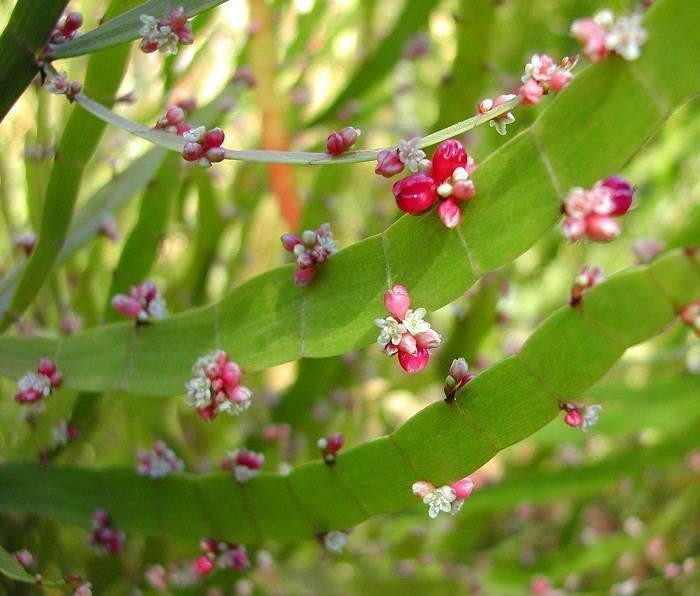 | ||
Genus Homalocladium
(F. Muell.) L. H. Bailey Similar Muehlenbeckia, Coccoloba, Polygonaceae, Oxyria, Antigonon | ||
Tanaman cakra birawa jakang homalocladium platycladum
Homalocladium platycladum (centipede plant, tapeworm plant or ribbonbush) is a plant in the knotweed family from New Guinea and the Solomon Islands. It is the sole species in the genus Homalocladium.
Contents
- Tanaman cakra birawa jakang homalocladium platycladum
- Botanyst ep 50 homalocladium platycladum f muell l h bailey
- Description
- Fungi powdery mildew
- Prevention and control
- Pest scale insects
- References
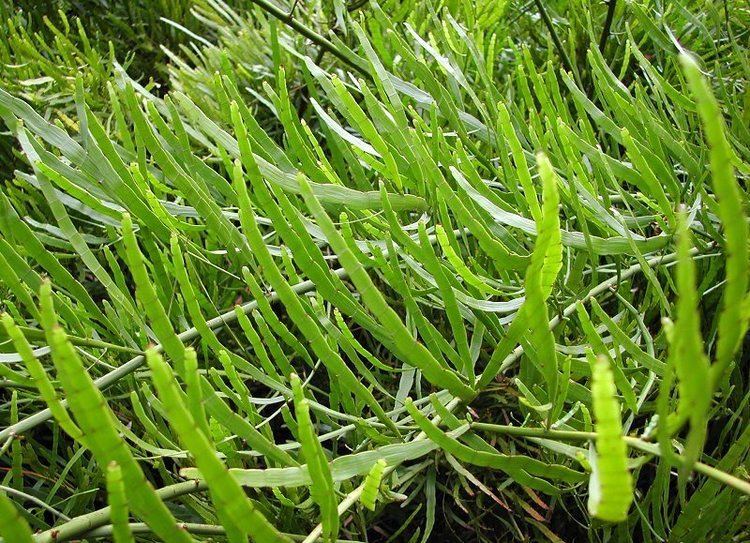
This plant had been naturalized also in other tropical regions, as Puerto Rico, India, Bolivia, Madagascar, Nicaragua and Pakistan It is also known by the name Muehlenbeckia platyclada.
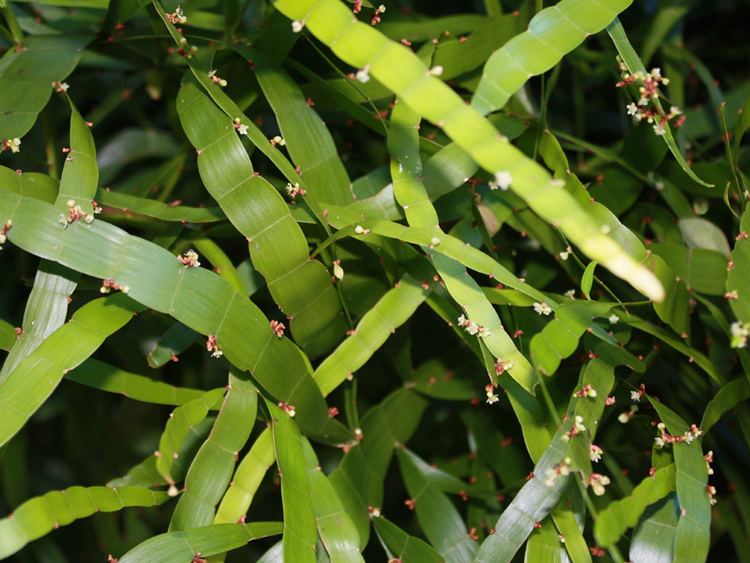
Botanyst ep 50 homalocladium platycladum f muell l h bailey
Description
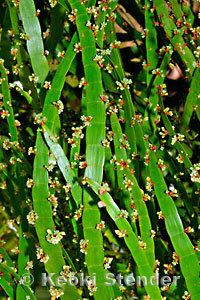
Evergreen shrub with flattened, jointed, green stems and arrow-shaped leaves. This shrub has both spreading and climbing tendencies. Flowers are short-lived and compact. Grows in well-drained soil that is moist in full sun. It also grows well in sandy loam to clayey soil with pH 5.5 to 6. Will tolerate some shade, heat and humidity. It grows 2 to 4 ft. high and 1.5 to 3 ft. wide. Leaves dark green, elongated, flattened, alternately arranged on a flat stem. Flowers tiny, white to light pink. Blooms from early to late spring.
Fungi: powdery mildew
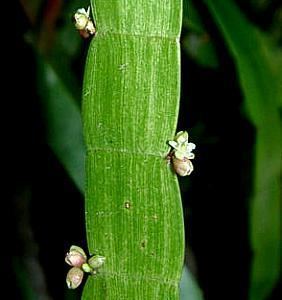
Powdery Mildew is usually found on plants that do not have enough air circulation or adequate light. Problems are worse where nights are cool and days are warm and humid. The powdery white or gray fungus is usually found on the upper surface of leaves or fruit. Leaves will often turn yellow or brown, curl up, and drop off. New foliage emerges crinkled and distorted. Fruit will be dwarfed and often drops early.
Prevention and control

Plant resistant varieties and space plants properly so they receive adequate light and air circulation. Always water from below, keeping water off the foliage. This is paramount for roses. Go easy on the nitrogen fertilizer. Apply fungicides according to label directions before problem becomes severe and follow directions exactly, not missing any required treatments. Sanitation is a must - clean up and remove all leaves, flowers, or debris in the fall and destroy.
Pest: scale insects
Scales are insects, related to mealy bugs, that can be a problem on a wide variety of plants - indoor and outdoor. Young scales crawl until they find a good feeding site. The adult females then lose their legs and remain on a spot protected by its hard shell layer. They appear as bumps, often on the lower sides of leaves. They have piercing mouth parts that suck the sap out of plant tissue. Scales can weaken a plant leading to yellow foliage and leaf drop. They also produce a sweet substance called honeydew (coveted by ants) which can lead to an unattractive black surface fungal growth called sooty mold.
Prevention and control
Once established they are hard to control. Isolate infested plants away from those that are not infested. Consult your local garden center professional or Cooperative Extension office in your county for a legal recommendation regarding their control. Encourage natural enemies such as parasitic wasps in the garden.
